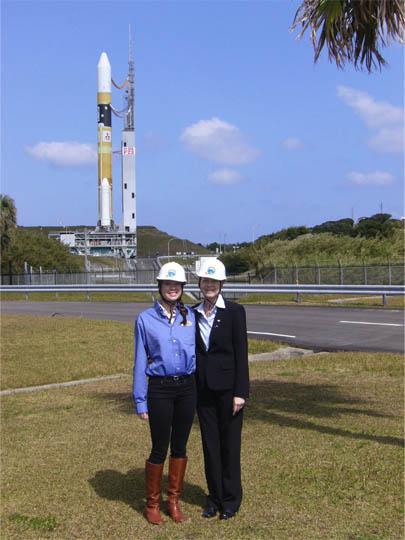
Remembering Dr. Arthur Y. Hou, 1947-2013
An old adage about environmental stewardship goes, “Think Globally, Act Locally.” When it came to rainfall, however, Arthur Hou, project scientist for the Global Precipitation Measurement mission from 2005 until his passing on November 20, 2013, took an approach of Think Globally, Act Globally.
"We need virtually continuous observations everywhere to construct a complete picture of precipitation around the globe, and that requires a lot of resources. Fortunately, precipitation does not recognize national boundaries. It is in the best interest of every nation to pool resources together to make the best possible measurements through partnership," Hou said in a 2012 interview about the mission at NASA's Goddard Space Flight Center in Greenbelt, Maryland, where he was based.
Pooling those resources is what put the "global" in Global Precipitation Measurement: combing international satellites to produce a robust worldwide precipitation data set for an international user community. With a global picture of rain and falling snow, scientists and others can gain a better understanding of Earth's climate, regional effects of severe storms and impacts on water resources for society.
But behind the scenes, the "global" mission meant years of work -- hours of negotiating in meetings and telephone calls across both the Pacific and the Atlantic Oceans, working through armies of lawyers and bulky governmental offices, and bringing together the right people who make the decisions years before the final design of the GPM Core Observatory, the anchor of the international precipitation satellite network, or constellation, was even in place. Sustaining it all was a vision, held and shared by Hou as he shepherded the GPM mission from an idea into existence.
His colleagues remember him as gracious and thoughtful, with a personality that brought people together.
"Arthur's most important contribution, I think, was building all the partnerships for the constellation," said Candace Carlisle, deputy project manager for building the GPM Core Observatory at Goddard. "He was very passionate about everything we were going to do."
"His attitude was just infectious for the people around him. Everybody just wanted to solve the problem, wanted to work with him," said Bill Lau, deputy director for Atmospheres at Goddard who knew he wanted Hou to be GPM's project scientist when they began looking at candidates.
Hou joined Goddard in 1990. He previously served as deputy project scientist for the Tropical Rainfall Measuring Mission. His work focused on the use of space-based observations of clouds and precipitation in global modeling. Earlier in his career, he worked in planetary sciences, studying Venus and Uranus, but his research interests included dynamic meteorology and climate modeling on Earth. In particular, Hou's worked on how latent heat at the equator – energy released when water vapor condenses into liquid or ice particles in the atmosphere – influences Hadley circulation, large scale winds that move energy around the planet. His work formed the basis for how climate modelers interpret latent heat's role in atmospheric circulation.
Hou received his doctorate in applied physics from Harvard University and his bachelor’s degree in aeronautics and astronautics from the Massachusetts Institute of Technology. He received numerous awards during his career, including a Robert H. Goddard Exceptional Achievement Award in Leadership, and in 2013 he was elected to be a Fellow of the American Meteorological Society.
The GPM Core Observatory at the heart of the GPM mission launched into space on February 27, 2014, three months after Hou passed away from pancreatic cancer. His wife Sandra and his daughter Sara both attended the launch from Tanegashima Space Center in Japan.
On May 29, after a relatively smooth check-out period, the satellite began its prime mission. The first data sets began flowing to users around the world who will use them for a wide array applications.
"I really hope that Arthur is remembered every time a piece of data from GPM helps to further our understanding of precipitation, helps to predict the direction of the next hurricane, flood prediction, landslide," said Gail Skofronick-Jackson, formerly Hou's deputy and now the current GPM project scientist. "Every time we save a life, I hope that some scientist out there remembers Arthur and that his legacy for this mission lives on."


